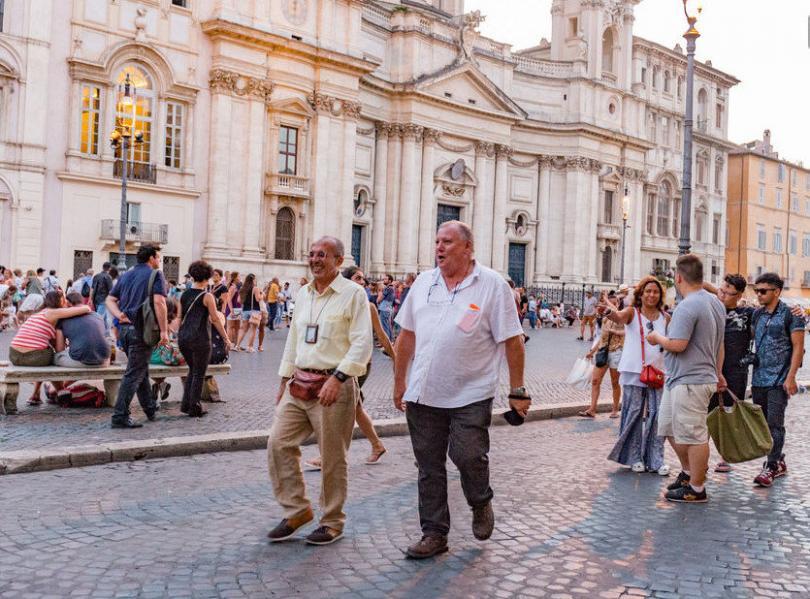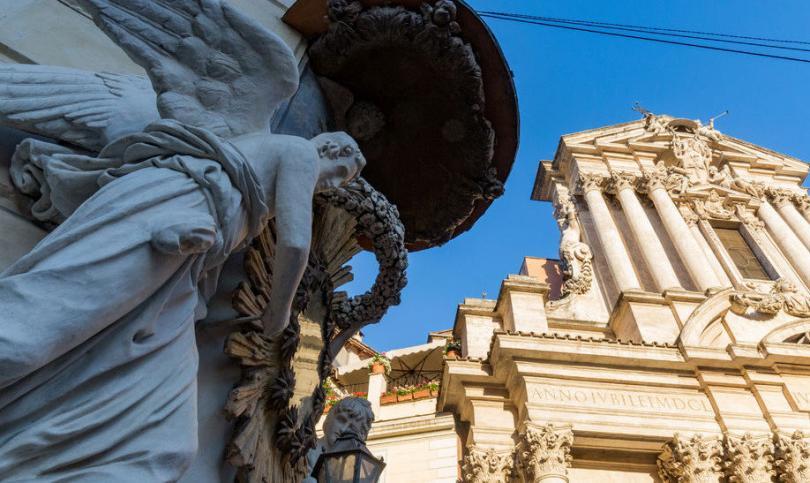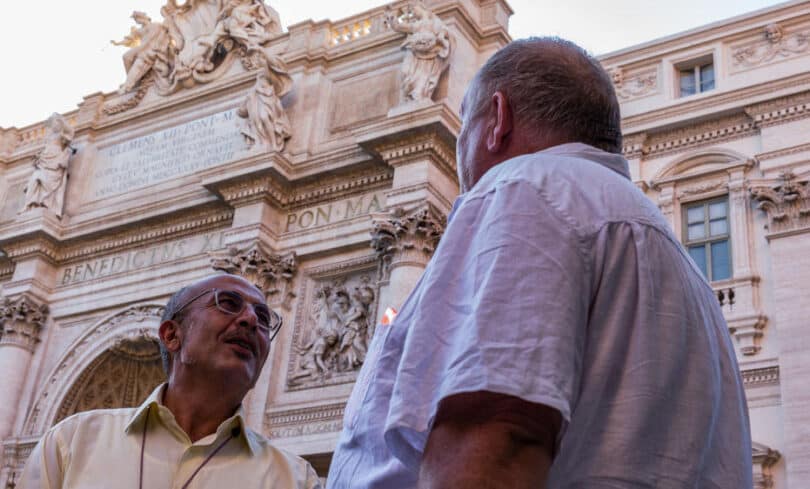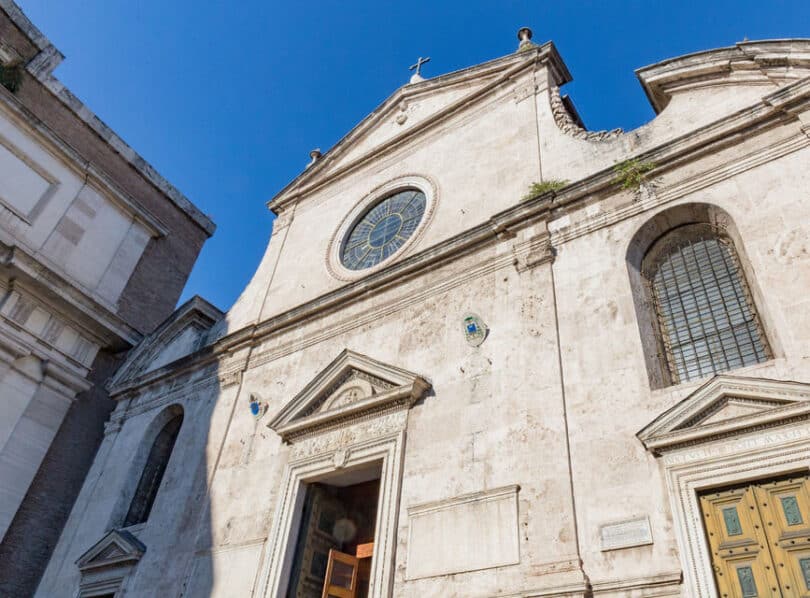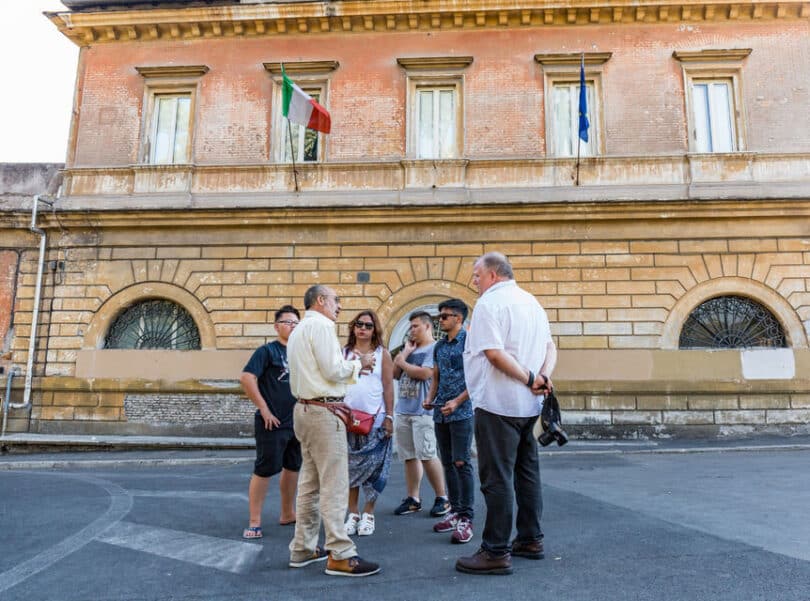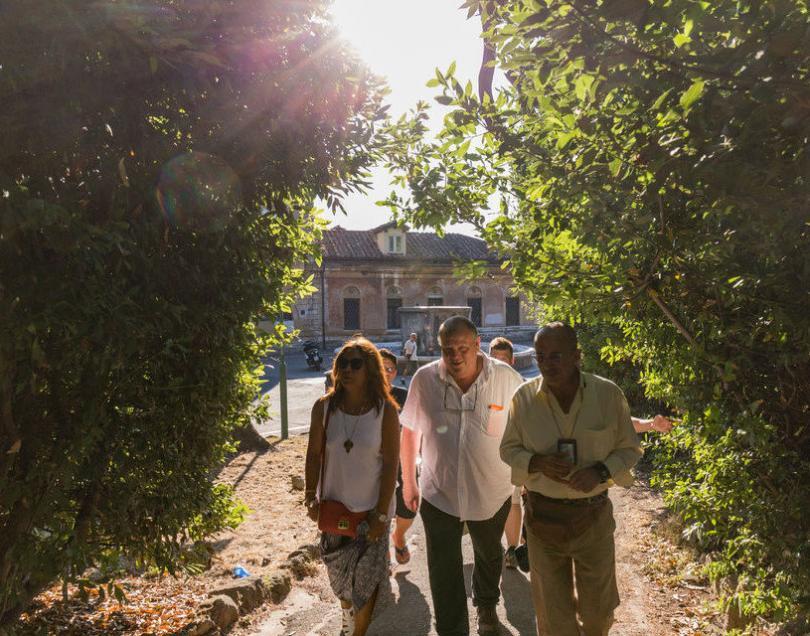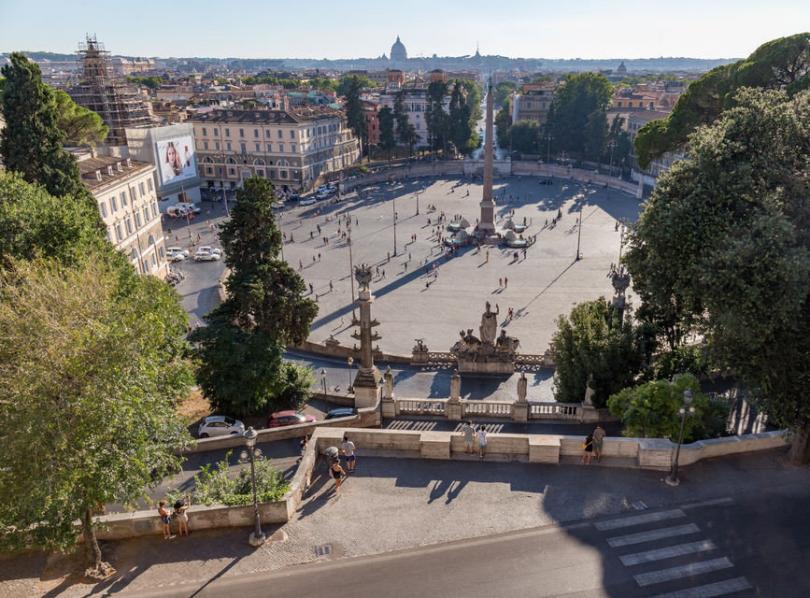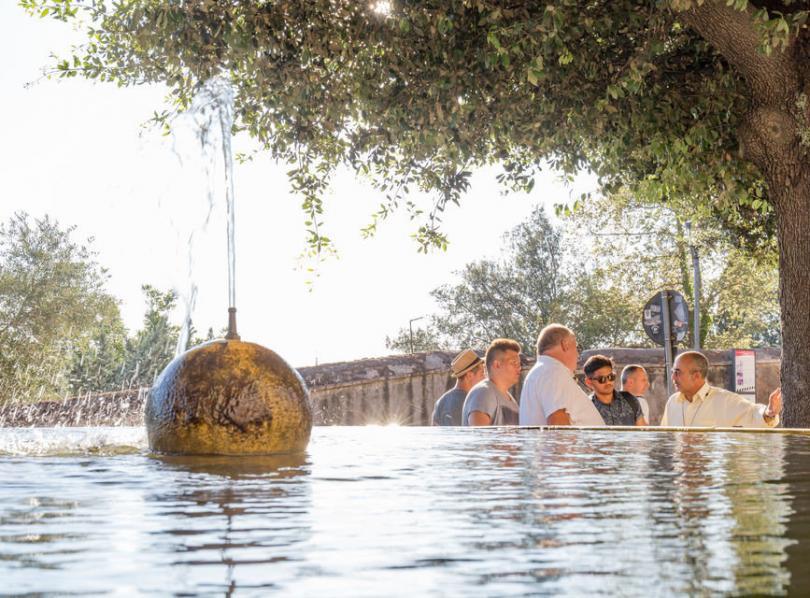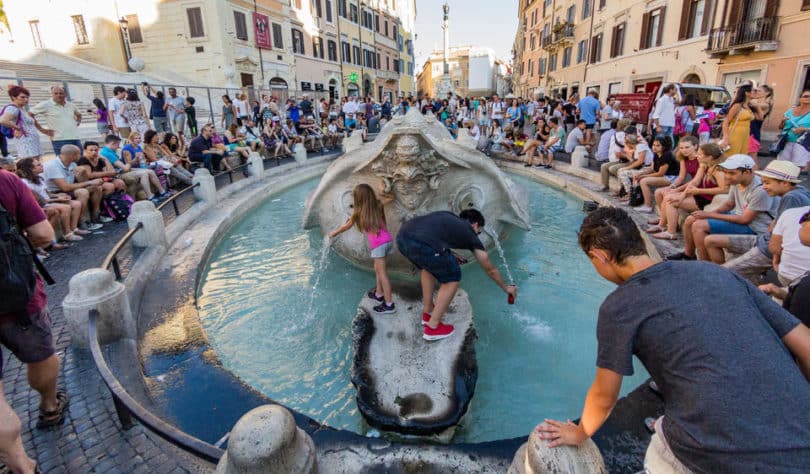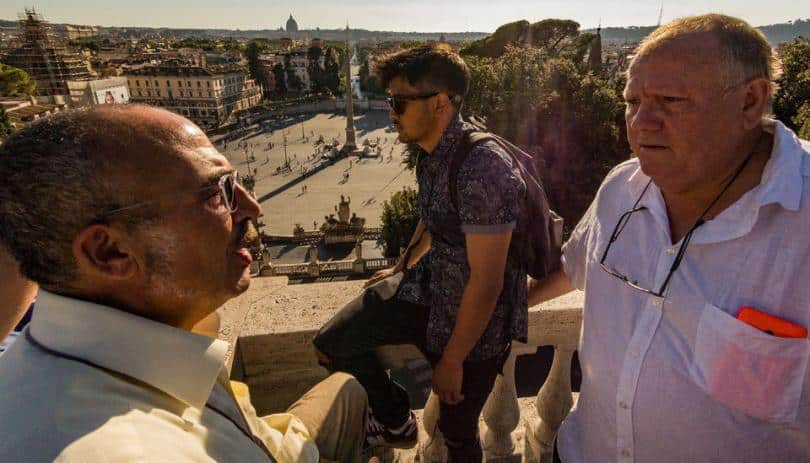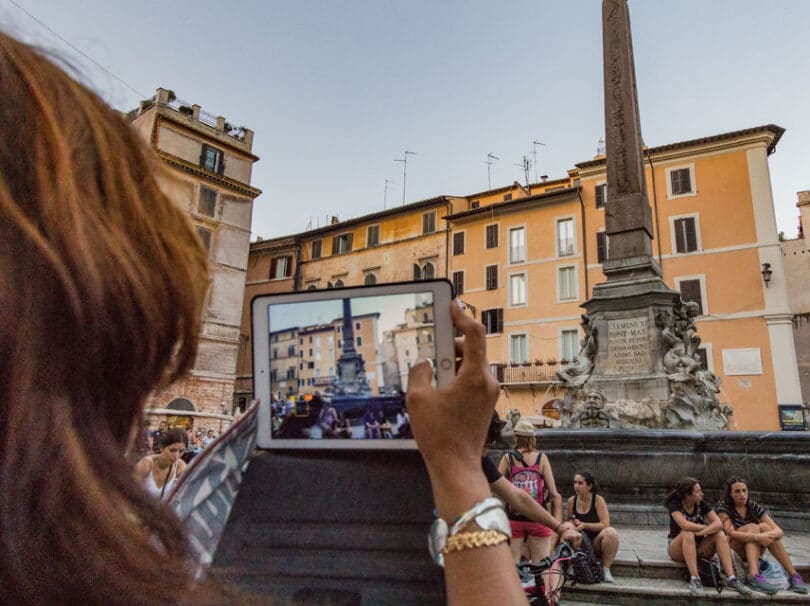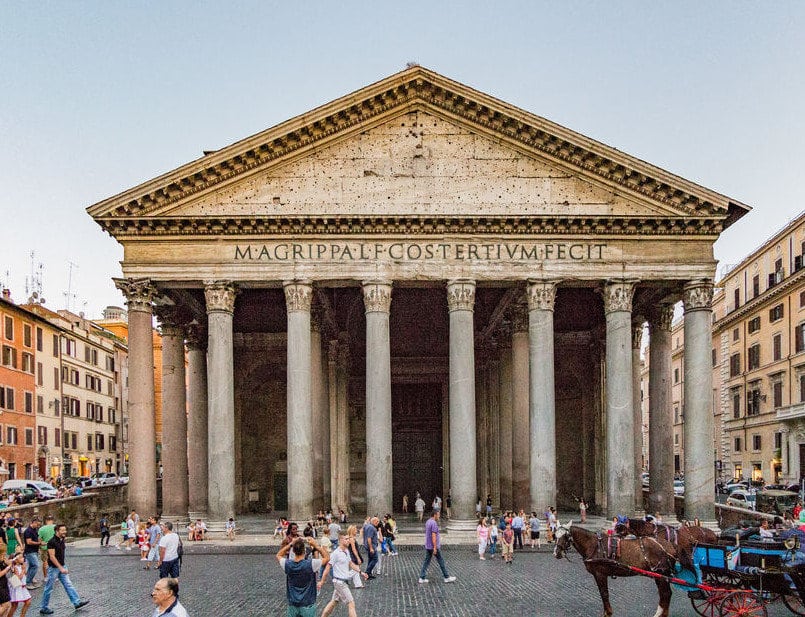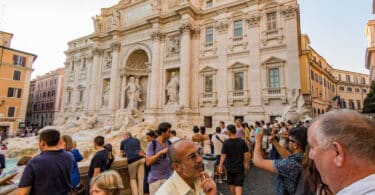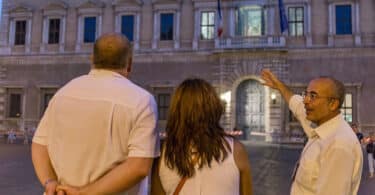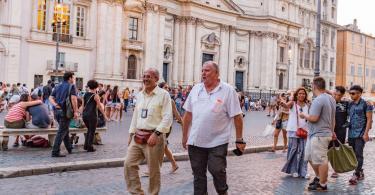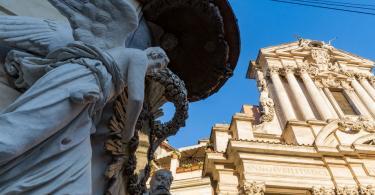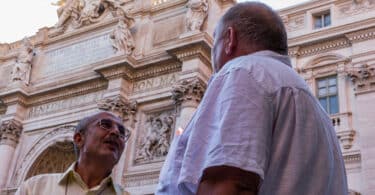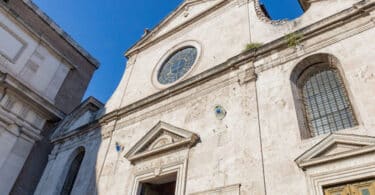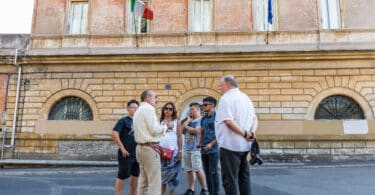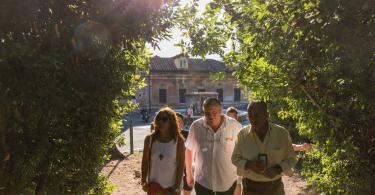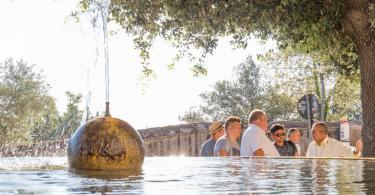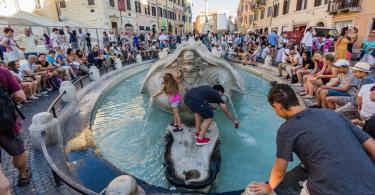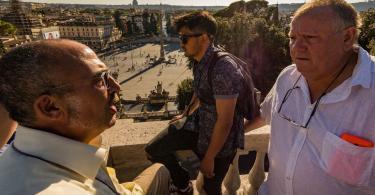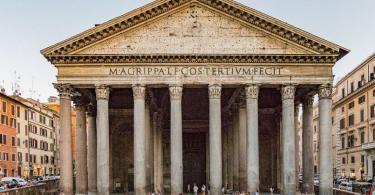929 Reviews
from €39.00 EUR
Duration: 3 Hours
Organized by: Rome Your Way
Take pleasure in an enchanting strolling tour of Eternal City at sunset, and see the sunset over the “Eternal City’s” stunning squares.
Experience the eternal city’s mesmerizing charm on our Rome Guided City Center Evening Sightseeing Walking Tour. Uncover the fascinating stories behind the ancient ruins, breathtaking architecture, and iconic landmarks as you stroll through Rome’s historic center, illuminated under the enchanting glow of the setting sun.
Meet your tour guide in Piazza del Popolo, formerly used for prominent games and also public executions, and currently a lively area for shows. Discover the vision of its architect: Giuseppe Valadier.
Continue to Pincio Terrace to see the sundown over the roofs of Rome. Marvel at the broad sweep of the Spanish Steps and Barcaccia’s fountain to a half-sunken ship. Next off, most likely to the Trevi Fountain on Piazza di Trevi, and throw a coin in the pool according to tradition.
Discover the historic Pantheon on Piazza della Rotonda, constructed in 27 BC as a holy place to all the gods of Rome. Wander over to Piazza Navona, founded on the site of a Roman amphitheater. Experience “La Dolce Vita” of Rome around Bernini’s splendid 4 Rivers fountain in its center.
Upright Campo de’ Fiori, dominated by the sculpture to the poet and philosopher, Giordano Bruno. Learn about his trial for heresy, and exactly how he was burned at the stake at the middle ages market in the 16th century.
Pantheon: A Testament to Ancient Rome’s Architectural Prowess
Our journey begins at the majestic Pantheon, an architectural marvel and one of the best-preserved structures from ancient Rome. Explore its fascinating history, from its initial construction as a temple dedicated to the gods of ancient Rome to its conversion into a Christian church. Admire the awe-inspiring dome, an engineering masterpiece that has inspired architects for centuries.
Trevi Fountain
The most famous of Rome’s fountains is the work of Nicolo Salvi who started it in 1732, more than a century after the project was abandoned by Bernini, and was completed by Gianpaolo Pannini in 1762. Its name is thought to derive from the tre vie (three roads) which converge here, and it is the fountainhead of the Acqua Vergine aqueduct which has brought water to this site since 19 BC. Neptune, at the center, is flanked by Tritons, one struggling to control his horse, symbolizing stormy seas, while his conch-blowing companion represents the ocean in repose. In the niches on either side of Neptune are Health and Abundance and above are the Four Seasons. People throw coins over their shoulder into the fountain to ensure a speedy return to Rome.
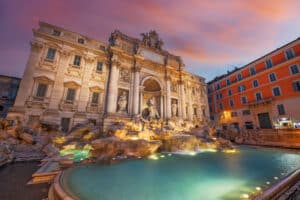
Piazzas of Eternal City: City Center Sunset Tour – Trevi Fountain
Spanish Steps
A church, a flight of steps and a fountain form the most elegant and complex Roman urban site of the 18th century. The Church of Trinita dei Monti was started in 1502 and consecrated eighty years later at the wish of the French kings who dedicated it to a saint dear to them Saint Francis of Paola. Inside the church are many chapels belonging to noble Roman families. Notice the double ramp staircase and the twin belltowers. At the beginning of the 17th century. Pietro Bernini, father of the famous Gian Lorenzo, built for Fbpe Urban Vlll the unusual boat-shaped fountain. A century later the third marvel was built to connect these two works of art: the Staircase of the Trinita dei Monti, a wonderful Baroque creation. Built in 1723 by the architect Francesco De Santis, it consists of a succession of ramps each made up of twelve steps (total of a hundred and thirty eight steps).
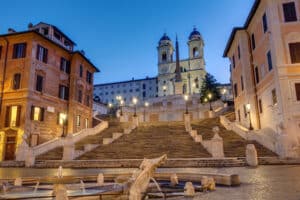
Spanish Steps
Piazza del Popolo
There are two identical churches and an obelisk: this is the Piazza del Popolo, the apex of the so-called trident because from here originate three long and straight street: via del Babuino, where are many antique shops, which leads to Piazza di Spagna (flanked by via Margutta, a street famous for its painters): via di Ripetta and the veiy busy via del Corso (Stendhal defined it as “the most beautiful of the world”).
Through the Porta del Popolo with its triumphal arch opening into the Aurelian walls, you get the impression, as you enter the square, that you are on the threshold of the most scenographic entrance to Rome. The square 30 slowly took its present shape through the centuries. Pope Sixtus V in 1589 had the obelisk erected at the centre. A century later Pope Alexander VII commissioned Rainaldi to build the twin symmetrical churches of Santa Maria di Montesanto and Santa Maria dei Miracoli (of the Miracles). As the space on the left was narrower, Rainaldi built a circular dome (for Santa Maria dei Miracoli) and an oval dome for the other church. But they seem the same when you look at them from the square.
The Piazza del Popolo got its larger oval shape in the 19th century thanks to the gifted architect Giuseppe Valadier, creator of the splendid gardens of the Pincio (which are slightly higher compared to the square).
Experience Rome with Our Expert Local Guides
Our Rome Guided City Center Evening Sightseeing Walking Tour is led by passionate and knowledgeable local guides who are eager to share their love for the city and its remarkable history. Their engaging storytelling will bring the city’s past to life, creating an unforgettable experience for visitors.
An Immersive Journey Through Rome’s Rich History
Our carefully curated walking tour ensures that you will gain deep insight into the historical and cultural significance of Rome’s most iconic landmarks. Through detailed narratives and captivating anecdotes, you will discover the stories behind these architectural masterpieces, while experiencing the enchanting atmosphere of Rome at night.
- Discover Rome’s historical gems, such as the Pantheon, Trevi Fountain, and Spanish Steps
- Marvel at the awe-inspiring architecture and learn about its fascinating history
- Enjoy the enchanting atmosphere of Rome’s illuminated streets and piazzas at night
- Engage with our knowledgeable and passionate local guides
- Immerse yourself in the culture and history of the city through engaging storytelling
- Professional Licenced Tour Guide (English, French, Spanish).
- Hotel pick-up and drop-off,
- Tour inside the Pantheon,
- Foods.
Free cancellation up to 24 hours before your tour starts.
from €40.00 EUR
Duration: 2.5 Hours
Organized by: Roman Holiday Travel
327 Reviews
from €35.00 EUR
Duration: 40 Min.
Organized by: Touriks
573 Reviews
from €300.00 EUR
Duration: 3 Hours
Seller: Isango
from €21.00 EUR
Seller: Tiqets
313 Reviews
from €25.00 EUR
Duration: 2.5 Hours
Organized by: Musica & Musica
103 Reviews
from €89.00 EUR
Duration: 3 Hours
Organized by: Eternal City Tours
5 Reviews
from €99.00 EUR
Duration: 1.5 hours
Organized by: Opera Omnia Events s.r.l
20 Reviews
from €29.00 EUR
Seller: Tiqets
290 Reviews
from €115.00 EUR
Duration: 80 Min.
Seller: Tiqets
from €44.00 EUR
Duration: 3.5 Hours
Organized by: City Wonders Ltd.
3.716 Reviews




